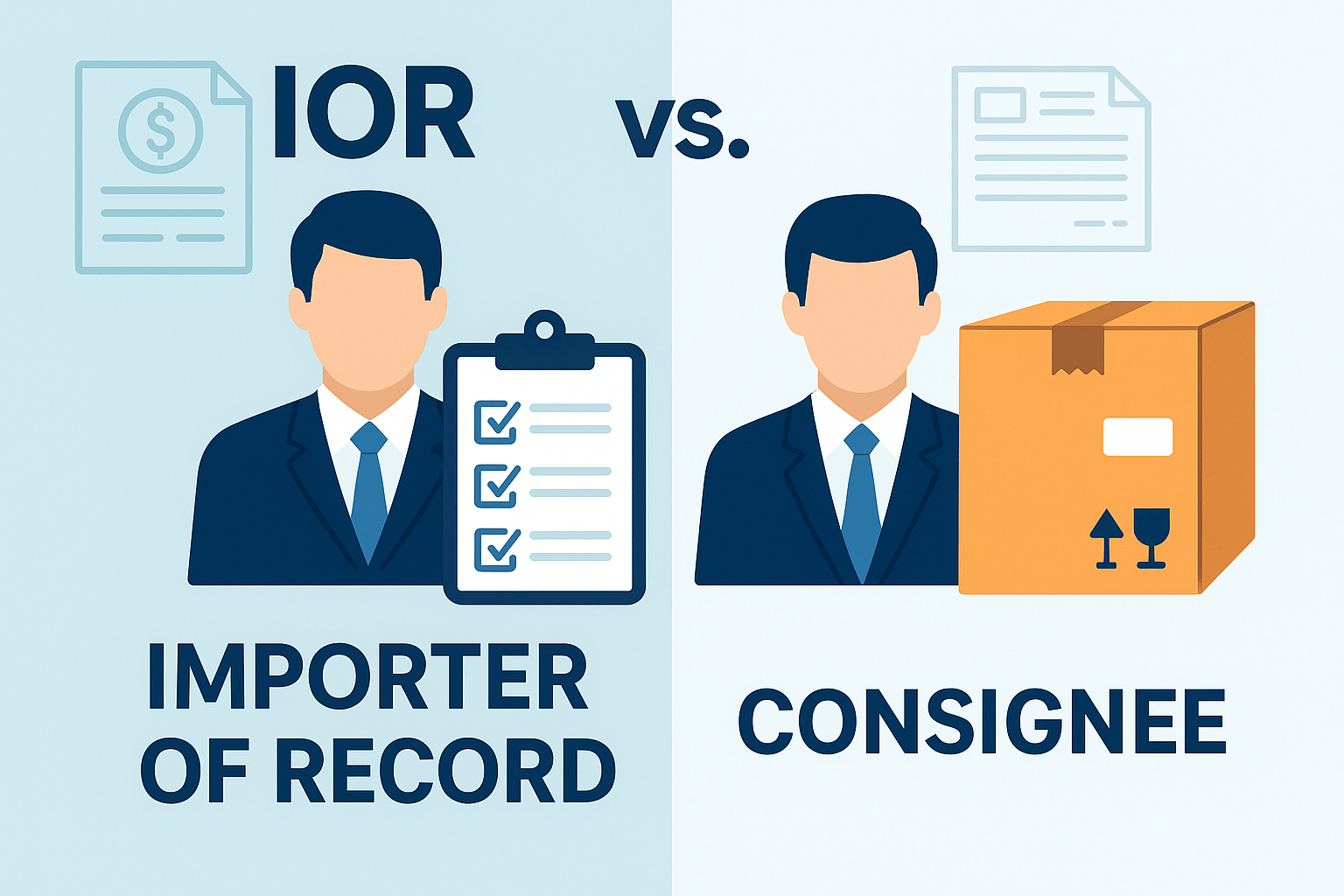Explore
- Home
- About Us
- Services
- Blog
- Contact Us
Quick links
- Guide to Import
- Guide to Export
- ICEGATE
- DGFT
- Get DSC

The Importer of Record (IOR) and the consignee are both essential roles in international shipping, but they serve different purposes. The IOR is the legal entity responsible for ensuring that imported goods comply with the laws and regulations of the destination country. This includes handling all customs documentation, paying duties and taxes, securing licenses or permits if needed, and maintaining import records. The IOR is accountable for the legal entry of the goods into the country and can be the buyer, the consignee, or a third-party service provider.
On the other hand, the consignee is the person or company to whom the goods are shipped and delivered. Their name appears on the bill of lading or airway bill as the recipient. While the consignee receives the goods once they clear customs, they are not necessarily responsible for customs compliance unless they also act as the IOR.
In many cases, the IOR and consignee may be the same entity, such as when a company imports goods for its own use. However, in global logistics or drop-shipping scenarios, they are often different. In short, the IOR ensures the goods enter the country legally, while the consignee takes possession of the goods after clearance.
EXCELLENTTrustindex verifies that the original source of the review is Google. Good service and posstive resposePosted onTrustindex verifies that the original source of the review is Google. Words fastest service for IEC Certificate and many for your Business They really understand client problem.Posted onTrustindex verifies that the original source of the review is Google. I found Mr Rahul Kolge quite professional & ethicalPosted onTrustindex verifies that the original source of the review is Google. Very Good and prompt response by the team and the work was completed in A day Appreciate itPosted onTrustindex verifies that the original source of the review is Google. Very Knowledgeable team. Highly supportive.Posted onTrustindex verifies that the original source of the review is Google. Great experiece. Just did my work within mins.Posted onTrustindex verifies that the original source of the review is Google. Good experience…Posted onTrustindex verifies that the original source of the review is Google. NicePosted onTrustindex verifies that the original source of the review is Google. All good!! Completely client oriented. Repeated followups required outside of the direct renewal process was dealt with diligently. Delighted with the service with our IEC Renewal I must say.Verified by TrustindexTrustindex verified badge is the Universal Symbol of Trust. Only the greatest companies can get the verified badge who has a review score above 4.5, based on customer reviews over the past 12 months. Read more







